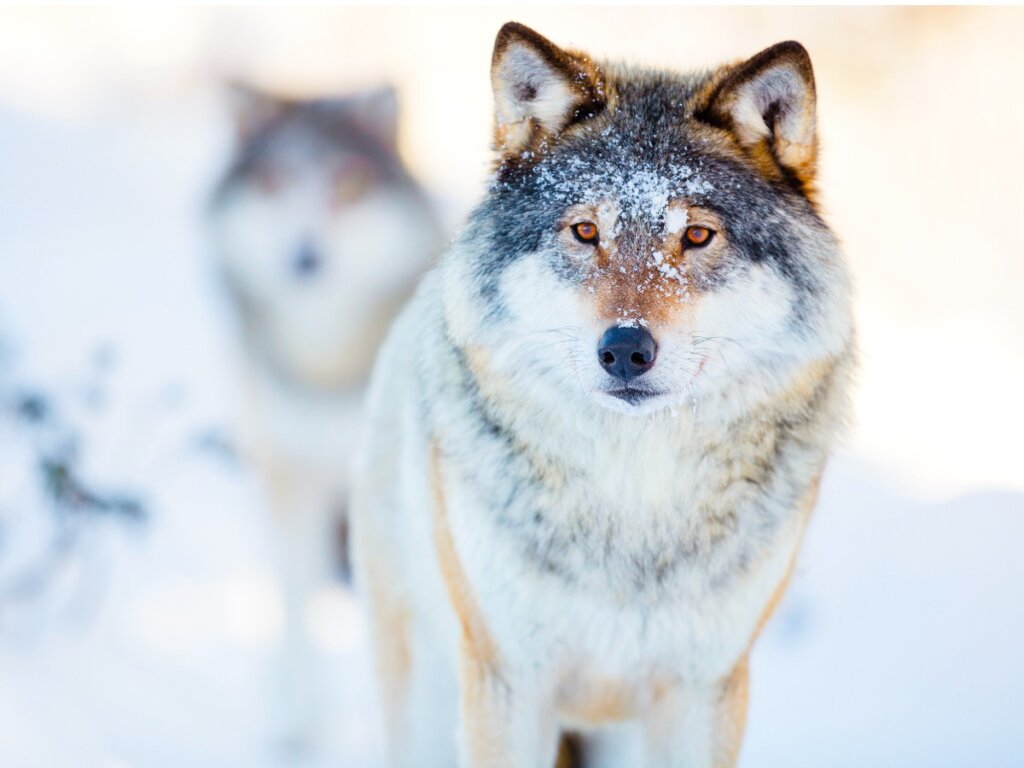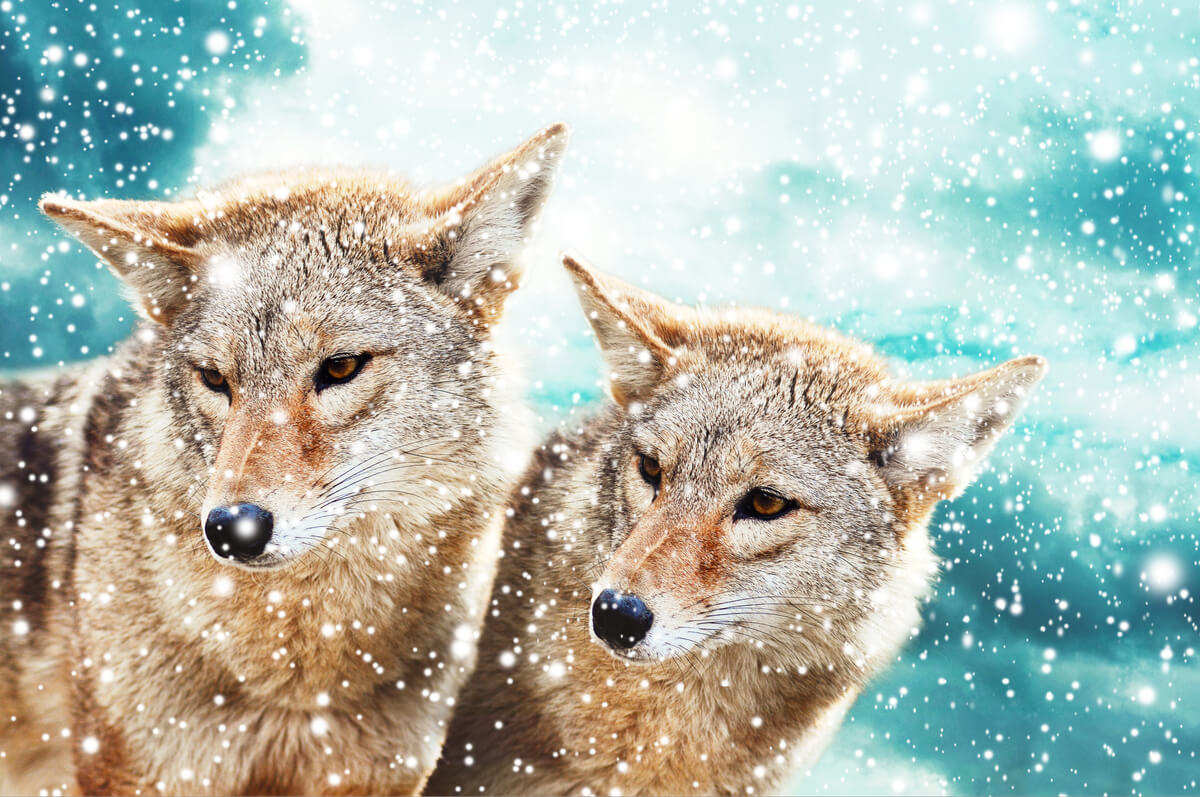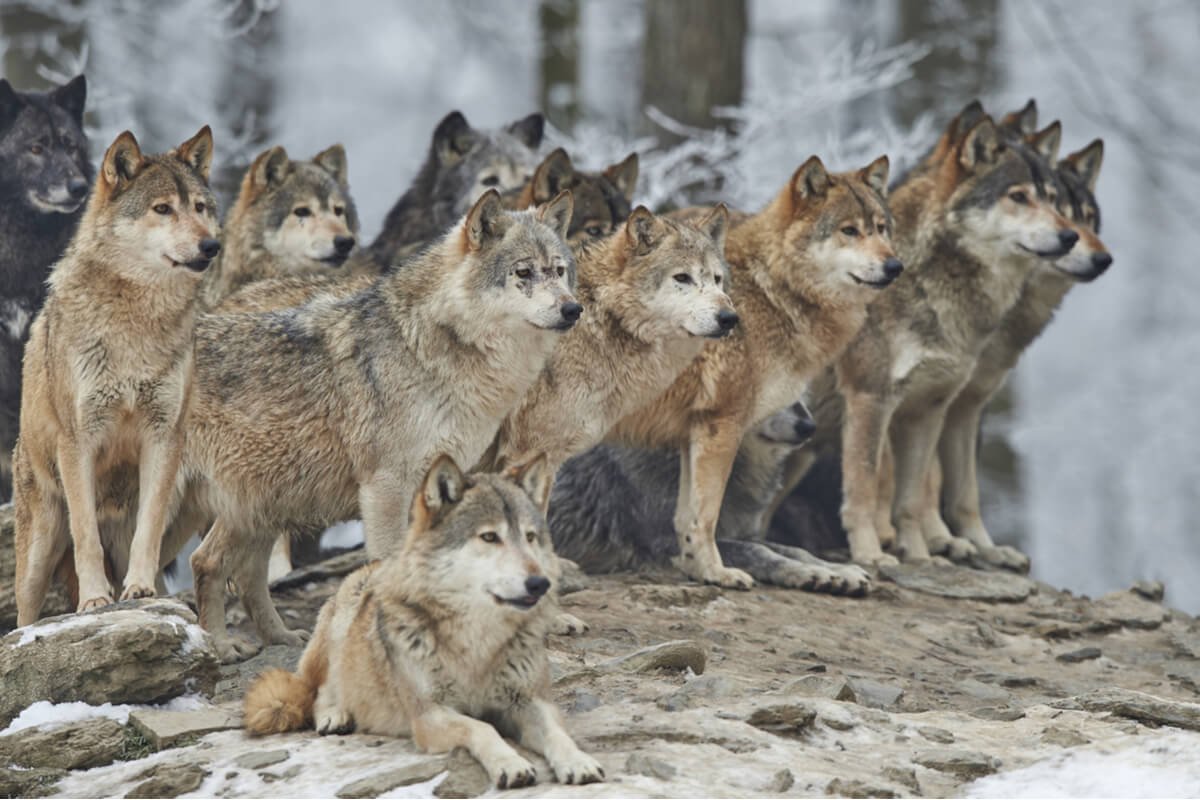The Amazing World of Wolf Behavior

Wolf behavior has always been synonymous with nightmares: howls, bright eyes at night, and sharp fangs. In ancient times, when humans roamed unprotected forests, these canids could be a real danger.
Today, the tables have turned. Rural folklore has given historical license to the extermination of this species, either to protect livestock or to hang their heads on a wall, bringing it to the threat of extinction. Knowing its true nature is essential in order to save this canid from permanent disappearance.
Characteristics of wolves
The wolf (Canis lupus) is a carnivorous mammal belonging to the Canidae family. Currently, about 50 subspecies of wolves are recognized, although it’s a subject that’s currently under discussion due to the similarities between some of them.
Its height varies between 60 and 90 centimeters (2 to 3 feet) and they can reach 130 cm in length (4 feet) – including the tail. Males are usually larger than females and can reach a weight of 90 kilograms (200 pounds).
They’re capable of adapting to different ecosystems depending on the species: tundra, rocky or mountainous environments, grasslands, forests and even in deserts. You can find them throughout the northern hemisphere.
Their diet is fundamentally carnivorous and opportunistic, and they hunt large prey when they live in groups and small mammals when they’re alone.
Wolves character
Wolves live in strongly hierarchical groups. They’re intelligent animals, with a rich and varied communication typical of herds with complex family relationships. They’re also territorial, so they can be aggressive if they feel invaded or threatened.
Their habits are fundamentally nocturnal, and at night they can travel long distances in search of food. They can also be active during the day, but are more likely to be found resting.

Wolf communication
Being sociable animals, communication is an element of great importance within wolf behavior. There are three main routes of communication in this species: the olfactory, the auditory, and the visual. Later, you can see them in more detail.
Olfactory communication
Wolves have a highly developed sense of smell that allows them to pick up odors over a range of several miles. Using volatile chemicals in urine and feces, they’re able to mark the territory and give information about their health, identity, and reproductive habits.
They also have exocrine glands on their legs, which allow them to know who has walked through their environment and to follow the trail if it’s a female in heat.
Oral communication
Wolves have a wide range of vocalizations: howls, growls, barks, and whines. Usually the loudest sounds will serve as a warning or marking of territory at long distances. When it comes to socializing within the pack, they tend to use lower-volume yelps, groans, and grunts.
The howl, in particular, is a long-distance call to locate their pack or other individuals. It’s also speculated that it’s a long-distance marking.
If you’re wondering if wolves really howl at the moon, we can tell you that this is a myth. When they raise their heads it look like they’re looking at it, but it’s simply a gesture that allows them to make the sound reach a greater distance.
Visual communication
Wolf behavior has a strong visual component in terms of postures and gestures. Since vocalizations can attract competitors or invaders from their territory, everything related to group socialization and the establishment of hierarchies is fundamentally based on the non-verbal.
Through body language, wolves can convey emotions such as fear, anger, and even affection or express gambling behaviors.
The hierarchy is established through behaviors of domination and submission, usually manifested through gestures. For example, a wolf lying on its back in a tense posture is showing submission to a higher-ranking individual.
Wolf behavior
Studying the behavior of wolves is based on fundamentally investigating their socialization.
Pack behavior
Packs are usually family groups dominated by a breeding pair, called the alpha. There are also young of different ages or other relatives. The size of the pack can vary a lot, between 2 and 40 specimens; however, the most common size is 8 to 9 individuals, which is the ideal number so that everyone can eat when they catch some prey.
Since the dominant pair is usually the only one that reproduces, certain dynamics are seen in large groups, in which some members tend to split into smaller groups and migrate to other territories. However, they can also choose to stay with the pack for their entire lives.
Going solo
Some specimens may leave their family group to look for a partner or their own territory. Sometimes they form a new group with a mate or join an accepting pack. In certain settings, they can be left alone and spend the rest of their lives like this.
Eating behavior
Wolves have been shown to devise hunting strategies in order to capture their prey. When it comes to dispersed animals, they’re capable of traveling for miles alone while, at the same time, communicating their findings.
This behavior originates from the competition with other predators, as when they hunt in a group they have an advantage over other solitary species, such as foxes and bears. On the other hand, moving in a group provides them with greater protection against possible attacks from other carnivores.
Older specimens are capable of transmitting information and teaching hunting strategies to younger ones, such as techniques to corner prey or optimal locations to catch them.

Wolves are intelligent, sensitive creatures. The fact that they aren’t human-friendly does not take away their right to life, as they also play a fundamental role in balancing ecosystems. When a wolf comes down to slaughter sheep on livestock farms, ask yourself the following question: would you run that risk if you had enough food and space?
All cited sources were thoroughly reviewed by our team to ensure their quality, reliability, currency, and validity. The bibliography of this article was considered reliable and of academic or scientific accuracy.
- Nichols, T. C. (2015). Cooperative hunting of Canada geese (Branta canadensis) by gray wolves (Canis lupus) in northern Quebec. The Canadian Field-Naturalist, 129(3), 290-292.
- Canis lupus (gray wolf). (s. f.). Animal Diversity Web. Recuperado 8 de julio de 2021, de https://animaldiversity.org/accounts/Canis_lupus/
- Cordoni, G., & Palagi, E. (2008). Reconciliation in wolves (Canis lupus): new evidence for a comparative perspective. Ethology, 114(3), 298-308.
- Ujfalussy, D. J., Virányi, Z., Gácsi, M., Faragó, T., Pogány, Á., Bereczky, B. M., … & Kubinyi, E. (2020). Comparing the tractability of young hand-raised wolves (Canis lupus) and dogs (Canis familiaris). Scientific reports, 10(1), 1-14.
- Janeiro-Otero, A., Newsome, T. M., Van Eeden, L. M., Ripple, W. J., & Dormann, C. F. (2020). Grey wolf (Canis lupus) predation on livestock in relation to prey availability. Biological Conservation, 243, 108433.
- Hamilton, L. C., Lambert, J. E., Lawhon, L. A., Salerno, J., & Hartter, J. (2020). Wolves are back: Sociopolitical identity and opinions on management of Canis lupus. Conservation Science and Practice, 2(7), e213.